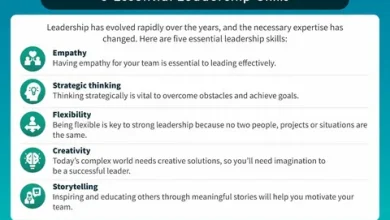Crafting the Perfect Voice and Tone for Animated Explainer Videos

Animated explainer videos are an incredibly versatile tool for communicating ideas, products, or services. They can capture attention, simplify complex concepts, and engage viewers like no other medium. However, the effectiveness of an animated explainer video is not just about the visuals or the script; it’s equally about the voice and tone used in the video. These elements play a crucial role in shaping how your message is received and can significantly impact viewer engagement and comprehension.
In this blog post, we’ll explore how to plan for voice and tone in animated explainer videos, discuss their importance, and provide practical tips for achieving the right balance to effectively convey your message.
The Importance of Voice and Tone
Voice and tone are essential components of any communication, including animated explainer videos. They help set the mood, convey emotion, and build a connection with the audience. Here’s why they matter:
1. Setting the Right Mood
The voice and tone of your explainer video help set the mood and establish the atmosphere. Whether you want to create a sense of excitement, professionalism, or relaxation, the voiceover and tone can make a significant difference in how the video is perceived. Effective production of Animated Explainer Videos: Planning for Voice and Tone ensures that your video communicates with the appropriate emotional resonance and clarity for your target audience.
2. Building Brand Identity
The voice and tone used in your video contribute to your brand identity. Consistency in these elements helps reinforce your brand’s personality and values, making it easier for viewers to connect with your brand on a deeper level.
3. Enhancing Message Clarity
A well-planned voice and tone can enhance the clarity of your message. The right voiceover can make complex information more accessible and easier to understand, ensuring that your audience grasps the key points of your explainer video.
4. Engaging Your Audience
The tone of your video influences how engaging it is. A friendly and conversational tone can make the content more relatable, while a professional and authoritative tone can establish credibility. Engaging your audience through voice and tone helps maintain their interest and encourages them to take action.
Planning for Voice
When planning the voice for your animated explainer video, consider the following factors:
1. Define Your Audience
Understanding your target audience is crucial for selecting the right voice. Consider factors such as age, gender, and preferences. For example, a youthful and energetic voice might resonate well with a younger audience, while a mature and authoritative voice might be more suitable for a professional or executive audience.
2. Choose the Right Voice Talent
Selecting the right voice talent is essential for conveying the desired tone and personality. Look for voice actors who can match the style and emotion you want to project. Whether you need a warm and friendly voice or a serious and professional one, make sure the voice talent aligns with your brand’s image and message.
3. Consider Accent and Language
Accents and language can influence how your message is received. If your target audience is global, you might need to choose a neutral accent or consider multiple versions of the video with different accents. Additionally, ensure that the language used is appropriate for the audience’s level of understanding.
4. Script and Delivery
The script should be crafted with the chosen voice in mind. Ensure that the language and style match the voice talent’s strengths. Provide clear direction on pacing, emphasis, and intonation to ensure that the delivery aligns with your intended tone.
Planning for Tone
The tone of your animated explainer video reflects the emotional and psychological aspects of your message. Here’s how to plan for tone effectively:
1. Align with Your Brand Personality
Your brand’s personality should be reflected in the tone of your video. For example, a tech company might use a tone that is innovative and cutting-edge, while a wellness brand might opt for a soothing and supportive tone. Ensure that the tone is consistent with your brand’s overall messaging and values.
2. Match the Video’s Purpose
The tone should be aligned with the purpose of the video. If the video aims to educate, a clear and informative tone is appropriate. For promotional videos, an enthusiastic and persuasive tone might be more effective. Tailor the tone to suit the video’s objective and desired outcome.
3. Consider Emotional Impact
Think about the emotional response you want to evoke in your audience. A light-hearted and humorous tone might be suitable for content meant to entertain, while a serious and compassionate tone may be better for videos dealing with sensitive topics. The tone should resonate with the viewers’ emotions and enhance their connection to the content.
4. Maintain Consistency
Consistency in tone is key to delivering a coherent message. Ensure that the tone remains consistent throughout the video, from the introduction to the conclusion. Inconsistencies can confuse viewers and detract from the overall impact of the video.
Practical Tips for Achieving the Right Voice and Tone
To ensure that your animated explainer video has the right voice and tone, follow these practical tips:
1. Create a Voice and Tone Guide
Develop a guide that outlines the desired voice and tone for your video. Include details about the target audience, preferred voice characteristics, and tone guidelines. This guide will serve as a reference for voice talent and production teams, helping to maintain consistency throughout the project.
2. Provide Clear Direction
Communicate your expectations clearly to the voice talent. Provide specific instructions on how you want the voice to sound, including pacing, emphasis, and emotional delivery. Consider providing examples or reference videos to illustrate the desired voice and tone.
3. Conduct Voice Talent Auditions
If possible, hold auditions for voice talent to find the best fit for your project. Listen to samples and assess how well the voice aligns with your brand and message. Don’t hesitate to provide feedback and request adjustments to ensure that the voice matches your vision.
4. Review and Revise
Once the voiceover is recorded, review the footage to ensure it aligns with your expectations. Pay attention to how well the voice and tone complement the animation and script. Make revisions as needed to fine-tune the delivery and enhance the overall impact of the video.
5. Test with Your Audience
If feasible, test the video with a segment of your target audience to gather feedback on the voice and tone. This can provide valuable insights into how well the video resonates with viewers and whether any adjustments are needed.
Conclusion
The voice and tone of your animated explainer video play a crucial role in shaping how your message is received and engaging your audience. By carefully planning and aligning these elements with your brand’s personality, the video’s purpose, and your audience’s preferences, you can create a compelling and effective explainer video. Remember to define your audience, choose the right voice talent, and maintain consistency in tone to ensure a successful outcome. With thoughtful planning and execution, your animated explainer video can captivate viewers, convey your message clearly, and drive meaningful engagement.




